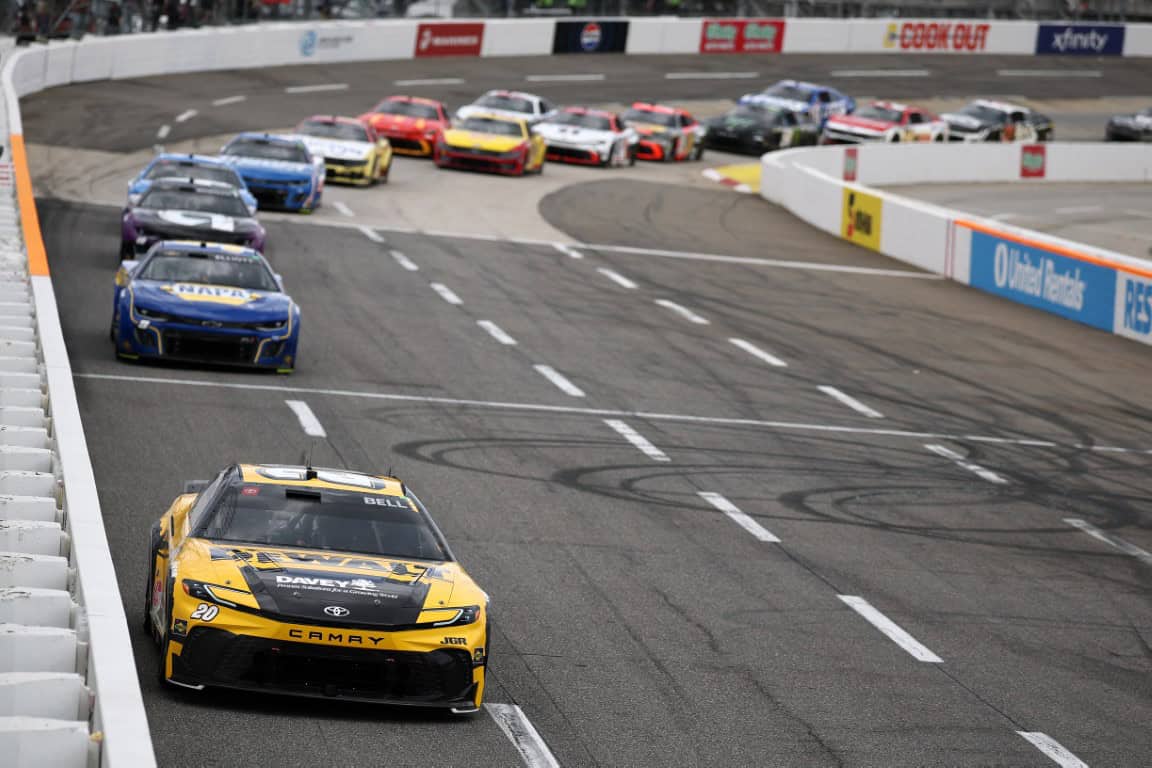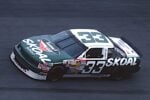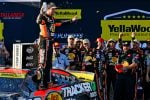Ten wins in a season. Sixty career victories. More than 51,000 laps led. Seven NASCAR Cup Series championships. 12.5 career average finish over 25 years.
Any of those numbers alone is historical, the mark of an accomplished racecar driver, a great racecar driver.
The history book is a book of numbers. Numbers of years, numbers of wins, numbers of tears riding a dream, numbers of drivers who paid the ultimate price for riding it.
And those numbers are important. They offer something about another era or a generational talent in this one. Somewhere down the line, they’re proof of what once happened. They mark time and change and beginnings and endings. Numbers are the foundation of this sport and of this column in this little corner of it.
But they’re also just numbers.
As yet another NASCAR season draws to a close, the national series roll into Martinsville Speedway, a tiny gem nestled in a misty bowl in the southern Virginia hills, where the cry of a train breaks the morning quiet and where, somehow, time sometimes stands still.
So I combed over the history books and stat sites for another number to illustrate some moments in time. Martinsville has been a staple on the NASCAR circuit since 1949, so there is plenty of information to choose from. Richard Petty won 15 times. His son, Kyle started 54 races without a win — the most of any driver, tied with Ken Schrader for that dubious honor. Jeff Gordon had a jaw-dropping 6.7 average finish — one that he maintained over 47 starts.
There’s so much to look at and think about, and sometimes when there’s an overwhelming amount of information, the mind wanders. Mine is certainly not immune. And I wondered: do Richard Petty’s 12 Martinsville grandfather clocks (three of his wins happened before the clock trophy came to be) all ring with the exact same note? Or is there one that’s higher-pitched, another a deeper bass? Does one run just a tick slow, or a hint too fast? How long until a driver switches off the chime — or do they let it reverberate through their home as a reminder, long after the lights have faded and the checkered flag stops waving?
And somehow, these questions seem important.
Those numbers we study with awe (and also with questions, skepticism and sometimes a sense of humor) are there in the pages of the history books because people put them there. Real people, some of whom became heroes. Others made a smaller mark, but a mark nonetheless. Some ensured their own immortality. Most by far never won a race.
The truth is, numbers in a book or on a screen do tell a story. They’re important because they preserve the past for future generations of fans to read and to connect and to understand. In a way, they explain why race fans tend to be so nostalgic, because they represent something in our lives that we saw unfold. We were there, in spirit if not in person. We were part of something. We were a part of the story: a first win, a last win, a triumph and tragedy.
Storytelling is, in some cultures, the primary way history is passed from one generation to the next. Native Americans view stories as living entities, something that forges and strengthens bonds. Stories are sacred, valuable. They paint a vivid picture long after the moments they describe have faded.
Part of Martinsville’s story is intertwined with the gears of the grandfather clock. While the races aren’t considered NASCAR’s crown jewels, that clock trophy is one that every driver wants, has wanted since he climbed into a racecar.
Drivers have come and gone, and the clock has been a constant, locally crafted for race winners since 1964. That will change somewhat as the company that made those clocks for a century in those Virginia hills is closing, a sign of the times when rising costs and tariffs have overtaken some of the last remaining connections to our collective past.
Even the clock is important because of the people whose stories it’s become a part of. Hendrick Motorsports’ story almost ended until Geoff Bodine won that clock in a race after which the team was slated to shutter for good. Jimmie Johnson’s clock sat untouched on the trailer that is Martinsville’s makeshift victory lane after his win in October 2004 was overshadowed by a plane crash that killed several team members and family members. Gordon won for the last time in the fading light of an autumn day, fans lingering in the stands long after the checkers and after nightfall, unwilling to walk away from that one last moment.
A couple of drivers’ stories ended at Martinsville. While it’s not one of NASCAR’s high-speed tracks, racing is a dangerous game. Charlie Jarzombek died when his throttle hung open in a Modified race in 1987. His cause of death, basilar skull fracture, would become all too well-known as the cause of Dale Earnhardt’s death in 2001. It’s an injury that is the centerpiece to some of NASCAR’s darkest stories, a reminder that even the toughest drivers are humans with human frailties. Yet their stories never really end.
Hall of Famer Richie Evans also lost his life at Martinsville in a practice crash. He’d already clinched the season title. Evans was a nine-time Modified champion, and while not a household name like Petty or Earnhardt or Johnson, he carved his own records. Evans was so feared in his early days in Upstate New York that he’d often lie about which track he’d race at on a given weekend so that some of his rivals would plan to race somewhere else where they’d have a chance, only for Evans to show up and win anyway.
Jeff Burton once ran Martinsville with a relief driver on standby — in case he got called home for the birth of his son, Harrison. Harrison Burton is now a Cup Series winner. Other drivers have raced hurt, gritting out an injury to chase points or victories. A few years ago, one Cup driver toughed out a race while throwing up in the car for most of it. I’ve always imagined there’s a little humor there as the crew chief directed somebody to grab a towel and help him clean up afterwards … and my guess is they all suddenly found something else very, very important to do. Martinsville is also the track where then-rookie Dale Earnhardt Jr. had such a terrible day that nobody was particularly surprised when he hit a tow truck, among other things.
Stories abound because everyone has one. And those moments live when we tell them — because we tell them. Every driver, every crew member, every fan holds the sport in the palm of our hands. Results and championships and every crazy statistic only tell part of NASCAR’s timeline. The rest is about the people. And the only way to preserve those stories is to tell them to anyone who will listen.
Amy is an 20-year veteran NASCAR writer and a six-time National Motorsports Press Association (NMPA) writing award winner, including first place awards for both columns and race coverage. As well as serving as Photo Editor, Amy writes The Big 6 (Mondays) after every NASCAR Cup Series race. She can also be found working on her bi-weekly columns Holding A Pretty Wheel (Tuesdays) and Only Yesterday (Wednesdays). A New Hampshire native whose heart is in North Carolina, Amy’s work credits have extended everywhere from driver Kenny Wallace’s website to Athlon Sports. She can also be heard weekly as a panelist on the Hard Left Turn podcast that can be found on AccessWDUN.com's Around the Track page.





